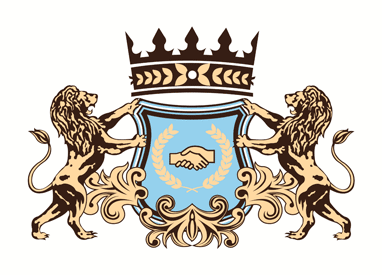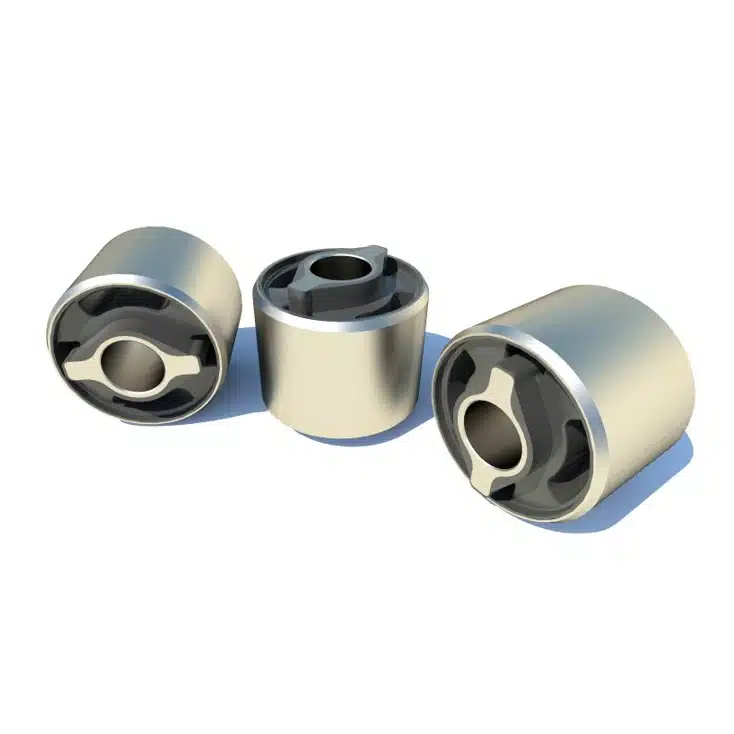Rubber Buffers & Anti-Vibration Bushes: Can They Really Extend Equipment Lifespan?
Understanding Rubber Components in Industrial Settings
Why rubber is still a preferred material?
Rubber remains a key material across industrial applications due to its exceptional elasticity, resilience under compression, and resistance to wear. These properties allow it to absorb energy, dampen vibrations, and handle dynamic loading without permanent deformation. In sectors like agriculture, marine, and rail, where equipment is routinely exposed to shock and motion, the material's ability to return to its original form is particularly valuable. Unlike metal-only alternatives, rubber components can withstand impact without transmitting force directly to surrounding structures.
In addition to physical durability, rubber’s chemical stability broadens its use across environments involving oil, grease, or outdoor exposure. This adaptability reduces the frequency of part replacements and maintenance interventions. Manufacturers continue to rely on it for critical isolation components not just because of legacy practices but because it consistently meets performance needs in harsh and variable conditions. Its ability to function reliably across a wide temperature range also adds to its longevity and cost-effectiveness.
What defines a rubber buffer?
A Rubber Buffer is a mechanical component typically installed to absorb shock, reduce vibration, or prevent contact between moving parts. They are commonly mounted at points of mechanical movement or impact to act as a barrier between rigid surfaces. Their job is simple in concept but essential in function—preventing excessive movement that could cause structural fatigue or eventual failure. These buffers help manage dynamic forces, making them a frontline solution in many machines' defence against wear.
Despite their unassuming form, rubber buffers are engineered with precise hardness ratings, profiles, and mounting options. The quality and design directly affect how energy is dissipated or redirected, which makes the choice of buffer a calculated decision rather than a basic part swap. In many cases, using the right buffer can delay the onset of fatigue-related issues and protect components such as bearings, shafts, and housings from long-term stress.
The mechanics behind anti-vibration bushes
An Anti Vibration Bush functions similarly to a rubber buffer in its role of dampening movement, but it differs structurally and operationally. Typically used where two components must flex or pivot relative to each other, bushes are bonded metal-rubber sleeves designed to fit into housings or brackets. As torque or vibration transfers through machinery, the bush compresses and absorbs that movement, protecting the system from repeated impact or oscillation. The design ensures that parts remain aligned, which is especially important in high-load or high-speed settings.
Well-engineered bushes can significantly reduce the wear on joints and moving components, prolonging the time between overhauls or part replacements. Their inclusion in suspension systems, drivetrains, and linkages means that they often endure a constant mix of rotational and directional forces. With precision manufacturing and appropriate sizing, these parts help maintain mechanical integrity even under continuous strain.
Vibration as a Hidden Threat to Machinery
How repeated vibration affects mechanical systems?
Vibration, when uncontrolled, introduces microscopic movements that eventually escalate into structural damage. Over time, repeated oscillation can loosen fixings, deform load-bearing components, and disrupt alignment. Even in precision-engineered systems, these small shifts can lead to significant reductions in performance. Gears may no longer mesh correctly, belts can misalign, and seals may fail prematurely. What starts as a minor vibration often ends in major mechanical intervention.
This degradation isn't limited to high-speed applications. In low-frequency machinery, the problem compounds when the structure resonates at a natural frequency, amplifying internal forces. In industrial environments where uptime is crucial, these unseen stresses can mean the difference between continuous production and unexpected failure. Components that could have lasted for years without issue become vulnerable once consistent vibration enters the picture.
Real-world consequences of unmitigated vibration
Uncontrolled vibration leads to more than just wear—it affects the entire operating environment. In manufacturing plants, vibration can cause misreads in sensors, distort machine calibration, or trigger unwanted system responses. These issues extend beyond the hardware itself and compromise the consistency of output, creating variability that impacts product quality and operational reliability.
In transportation or agricultural equipment, vibration contributes to operator fatigue and reduced comfort, especially during extended use. Beyond human factors, loose connections caused by persistent movement can lead to electrical faults or hydraulic leaks. The costs, both in repairs and operational downtime, quickly outweigh the investment required to manage the problem at its source. Without proper isolation, what could be a controllable variable becomes a recurring issue across the equipment’s lifespan.
Lifespan Gains Through Vibration Control
Reducing fatigue and structural stress
One of the most immediate benefits of vibration control is the reduction in fatigue across mechanical systems. When vibration is left unchecked, it doesn’t just affect the part directly exposed—it spreads throughout the assembly. Bolted joints can loosen, welded seams may crack, and rotating parts become misaligned. Over time, these small mechanical changes can cause major issues, reducing the efficiency and reliability of critical systems.
By incorporating properly designed vibration isolation components, equipment can operate under stress without internal deterioration. The reduction in transmitted forces means that every part downstream of the isolation point experiences less mechanical load. This added buffer zone slows down the ageing process of parts and cuts down on the frequency of component inspections and replacements.
Improving component alignment and wear rates
Vibration often disrupts alignment, which can create excessive friction or uneven load distribution. In drivetrains or motor assemblies, this leads to premature bearing failure and inefficient power transmission. Misaligned systems also introduce heat and energy loss, which can shorten the service life of connected components. Over time, these issues escalate into more frequent maintenance interventions.
Rubber-based isolation solutions help stabilise component positioning by absorbing external disturbances. Whether in linear or rotary motion systems, maintaining alignment helps ensure that parts wear evenly and predictably. The benefit isn’t limited to just performance—it also improves safety, especially in machinery where imbalance could result in hazardous operation or emergency shutdowns.
Lowering the risk of catastrophic failure
Unmanaged vibration doesn’t just lead to small issues—it increases the likelihood of critical breakdowns. When fatigue cracks go unnoticed or mounting points degrade, it sets off a chain reaction that can affect multiple systems. A single point of failure caused by long-term vibration can halt entire operations, especially in continuous-run environments like processing plants or logistics equipment.
Investing in vibration isolation is a proactive way to avoid these scenarios. Components like rubber buffers act as shock absorbers that prevent overloading sensitive sections. The payoff is not just fewer breakdowns but also more predictable performance metrics over time. Equipment stays within its design tolerances for longer, and any signs of degradation emerge more gradually, giving operators time to respond effectively.
Where Rubber Buffers and Anti-Vibration Bushes Fit In?
Application in static and dynamic systems
Rubber buffers and anti-vibration bushes serve vital roles in both static and dynamic equipment. In static systems, they primarily act as shock absorbers, preventing structural transfer of impact forces between solid surfaces. This reduces internal stress and protects fragile components or mountings from deformation. Common applications include mounting points for generators, compressors, and stationary machinery, where they create a controlled gap between rigid elements.
In dynamic systems, these components become even more critical. Moving equipment introduces shifting loads, irregular torque, and unpredictable feedback, all of which rubber-based parts are uniquely positioned to handle. By flexing in response to motion, they maintain mechanical balance and reduce the likelihood of fatigue failure across rotating or oscillating parts. Their ability to manage multi-directional forces helps stabilise machinery in real time, keeping performance within acceptable parameters even under challenging conditions.
How they support long-term performance?
The longevity of industrial equipment is closely tied to the stability of its mechanical connections. By limiting excessive vibration and preventing micro-movements, buffers and bushes protect these joints and links from progressive damage. When these components are selected correctly, they become part of a system that ages more predictably, avoiding sudden loss of performance or accelerated wear.
They also help preserve the tolerances built into machine design. When tolerances drift due to vibration, the result is often cascading inefficiencies—incorrect timing, increased friction, or uneven load distribution. Anti-vibration components help prevent these deviations from developing in the first place. Over years of service, this adds up to fewer service interruptions, lower repair costs, and a longer functional life for the equipment as a whole.
Industry examples: rail, marine, agriculture
In the rail sector, rubber-based vibration isolation helps extend the life of bogie components and improve ride stability. Trains operating over varied terrain or at high speed face constant vibration input, which affects braking systems, suspensions, and control electronics. Buffers and bushes in these systems act as low-maintenance solutions that can operate continuously in demanding environments without direct oversight.
Marine engines rely heavily on Rubber Buffers to reduce hull vibration and protect structural connections from resonant frequencies. Constant exposure to wave impact and engine feedback requires consistent vibration control to preserve hull integrity and prevent wear in couplings and shafts. In agriculture, isolation components reduce the fatigue endured by machinery exposed to repetitive ground contact, engine pulses, and shifting loads. Across all these sectors, the outcome is the same: less unplanned maintenance and longer intervals between major overhauls.
Quality, Design, and Fitment Matter
Why generic components underperform?
Generic vibration isolation components are often mass-produced with broad tolerances and standardised materials. While they may fit physically, their performance frequently falls short in demanding environments. Without precise calibration to the specific load, frequency, and movement patterns of a system, these parts fail to deliver consistent damping. As a result, they can introduce variability into the machine’s operation or degrade more quickly under strain.
In many cases, the use of non-specialist components leads to uneven force distribution and premature fatigue in adjacent parts. The surface hardness, bonding technique, and overall design of an isolation element determine its durability and effectiveness. When these factors aren’t optimised for the application, the system begins to experience subtle shifts in alignment, increased wear, or resonance. Over time, the supposed cost-saving of using generic parts is erased by frequent replacements and extended downtime.
The importance of R&D-backed solutions
Components developed through focused research and testing consistently outperform off-the-shelf alternatives. R&D-backed solutions are engineered with specific applications in mind, ensuring that the design takes into account the full spectrum of operational variables—load distribution, dynamic movement, temperature exposure, and environmental stress. This tailored approach increases reliability and makes vibration isolation more predictable.
By investing in testing and validation, manufacturers can fine-tune components to deliver consistent results under real-world conditions. This not only supports longevity but also enables better system diagnostics. Isolation elements with proven load deflection characteristics allow maintenance teams to identify potential failures before they happen, using performance data as a baseline. Precision and predictability go hand in hand when extending equipment lifespan.
Installation accuracy and its long-term effects
Correct installation of isolation components is as crucial as their design. Even high-quality rubber buffers and bushes will underperform if installed with poor alignment, improper torque settings, or incompatible mountings. Misaligned fittings can create unintended stress points or prevent the rubber from deflecting correctly, which negates its vibration-absorbing function. In time, these errors contribute to stress fractures and inefficient load transfer.
On the other hand, accurate fitment preserves the geometry and alignment of mechanical systems. When buffers and bushes are positioned correctly, they can operate as intended across their full deflection range. This maintains system balance and protects surrounding components from unexpected movement. Over months and years, this precision reduces the likelihood of cumulative wear and keeps the machinery closer to its original design performance.
Predictive Maintenance and Component Selection
Signs that isolation components need replacing
Even the most durable rubber buffers and bushes have a finite operational life. Over time, they may harden, crack, or deform—especially when exposed to heat, oil, or excessive load. Common warning signs include increased vibration levels, abnormal noise, or shifting alignment in the system. These indicators often suggest that the isolation elements are no longer absorbing energy effectively, putting the rest of the machine at risk.
Visual inspections may reveal surface degradation or separation between bonded sections. In some cases, the part might still appear intact but have lost its internal elasticity, causing it to transmit more force than intended. Monitoring for subtle performance changes, such as inconsistent readings from sensors or reduced stability in moving parts, can provide an early signal that component replacement is due.
Choosing the right specification for the environment
Selecting the correct isolation component goes beyond matching physical dimensions. Load capacity, temperature tolerance, and vibration frequency range all affect performance. For machinery in heavy-duty or high-temperature environments, the rubber compound must be formulated to maintain elasticity under stress. Similarly, marine or outdoor applications require UV and salt-resistant materials to prevent degradation.
Specifying the right part involves considering how the equipment will be used over time. A well-matched rubber buffer or Anti Vibration Bush improves not only isolation but also the consistency of system performance. Inaccurate selection, by contrast, introduces instability that gradually erodes the reliability of the surrounding equipment. Collaboration with experienced suppliers or engineers ensures components are chosen based on real-world needs, not just catalogue specs.
The role of testing in validating performance
Performance testing plays a critical role in confirming that isolation components function as intended. Lab-based dynamic load testing can simulate years of use in a controlled setting, revealing how a rubber buffer or bush will behave under repeated stress. This helps manufacturers refine their designs and verify their suitability for different use cases before components are deployed in the field.
Testing also supports quality assurance throughout the manufacturing process. Consistent results across production batches ensure that what works in development will perform reliably in operation. For end users, this offers peace of mind—knowing that the components protecting their equipment have been validated under the conditions they’re expected to endure. Predictable behaviour, backed by data, reduces risk and improves service intervals.
Final Thoughts on Equipment Longevity
Do isolation components pay for themselves over time?
While they may seem minor in cost and size, isolation components play an outsized role in protecting capital equipment. Rubber buffers and bushes shield high-value systems from gradual damage that accumulates through daily use. By extending the time between major repairs and reducing downtime, they generate measurable savings over a machine’s life.
The return on investment becomes especially apparent in industries where failure leads to halted operations or missed deadlines. Incorporating the correct isolation components at the design or retrofit stage prevents recurring maintenance issues and safeguards overall efficiency. When chosen well and fitted correctly, they contribute to performance stability that outlasts the initial part cost many times over.
Customer testimonials and measurable benefits
End users across sectors consistently report improved machine uptime and fewer breakdowns after upgrading their vibration isolation setup. In particular, operators in agriculture and rail have highlighted reduced wear in mechanical joints and improved comfort for users following the integration of correctly specified buffers and bushes. These gains translate into longer service intervals, better safety, and reduced total cost of ownership.
The measurable benefits often extend beyond just mechanical durability. Systems run quieter, with fewer faults triggered by instability or excess movement. Over time, this improved control supports more consistent output, fewer rejected products, and easier compliance with quality standards. All of this reinforces the value of treating isolation components as a critical element, not just a supplementary part.
Looking ahead: evolving demands in vibration control
As machinery becomes more complex and expectations for performance rise, the role of precision-engineered isolation components will only grow. Demands for quieter operation, reduced emissions, and improved operator safety are all pushing manufacturers to prioritise vibration control in system design. Rubber buffers and anti-vibration bushes, when engineered to match these evolving requirements, help meet those expectations without introducing added maintenance complexity.
Future developments in material science and predictive monitoring will make it easier to customise and monitor isolation performance in real time. Whether retrofitting older systems or designing next-generation machinery, the decision to incorporate quality vibration control remains a practical step toward extending equipment life and maximising operational return.





















